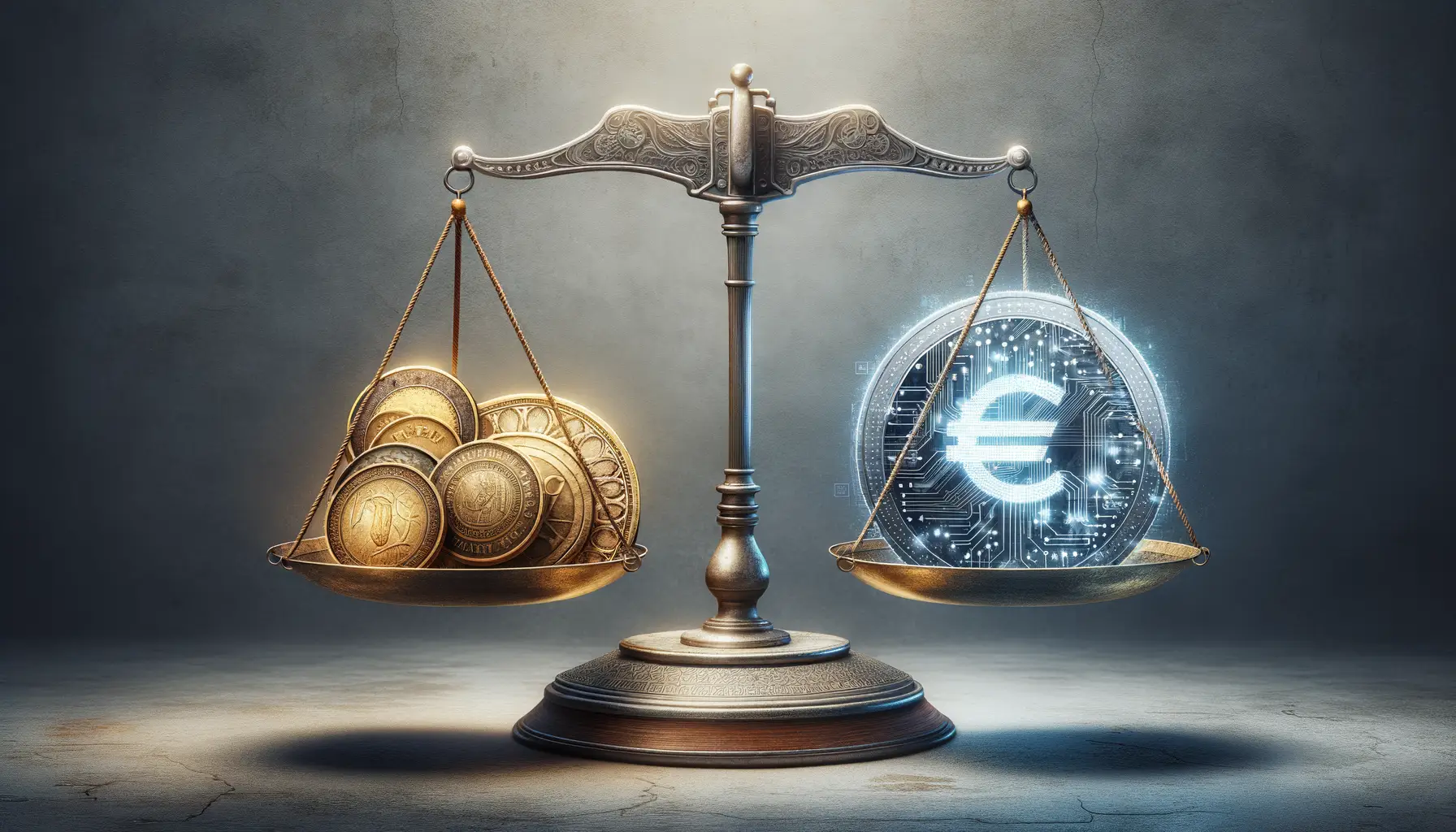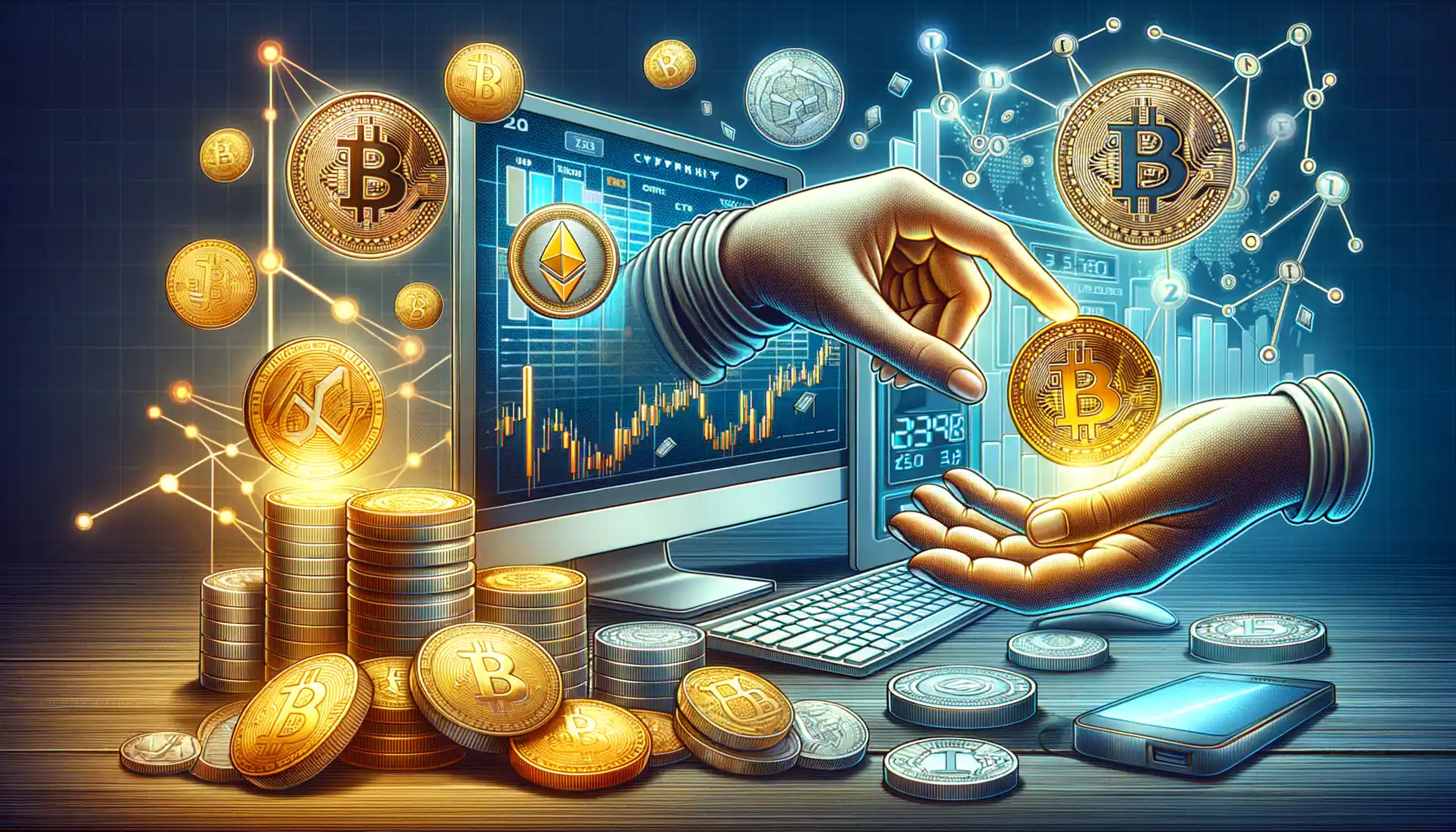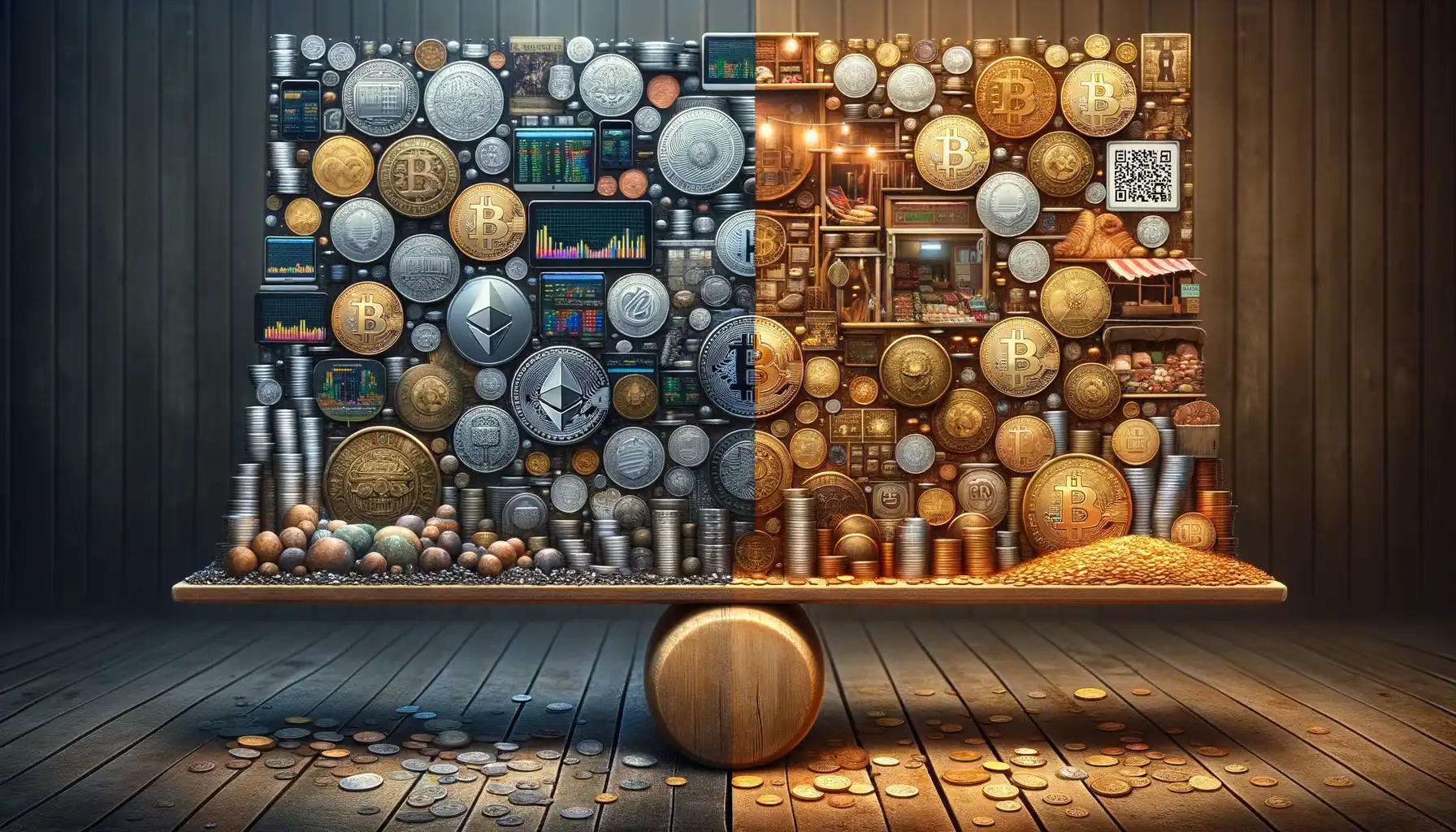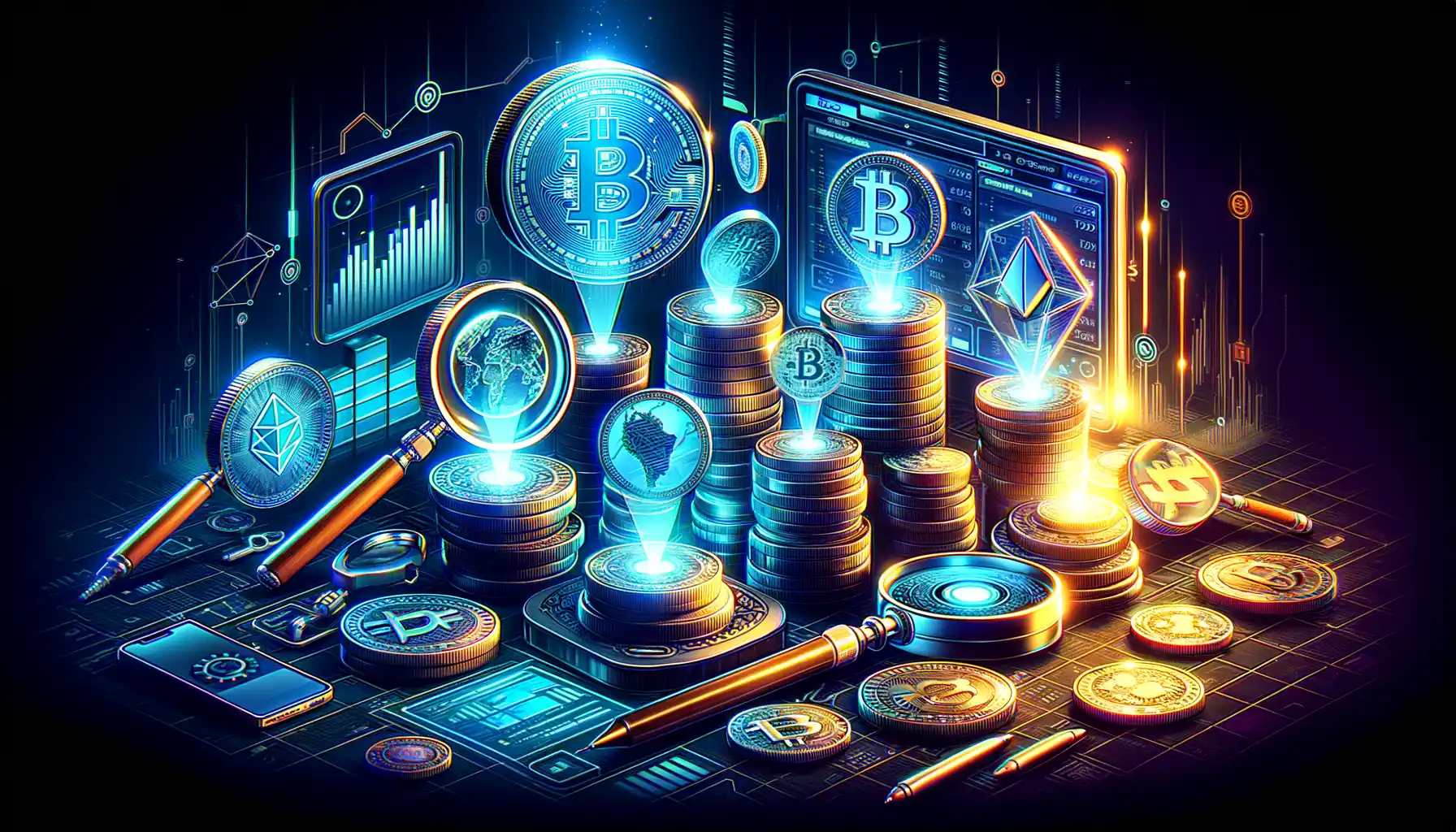Understanding the Basics of Cryptocurrency and Traditional Coin Collecting
What Makes a Coin Valuable?
Imagine holding two coins in your hands. One is a shimmering 1889 Morgan Silver Dollar, its surface etched by time and history. The other? A digital asset—let’s say one Bitcoin—that exists only in the intangible world of blockchain. At first glance, comparing these might feel like weighing apples against holograms. And yet, they both hold immense value—but for very different reasons.
In the world of traditional coin collecting, value often comes down to rarity, condition, and historical significance. That Morgan Dollar? Its story is told through the scratches on its surface and the year it was minted—a snapshot of economic resilience post-Civil War. Collectors chase after coins like this because they tell stories you can touch.
But cryptocurrency flips the narrative. It thrives on utility, security, and its decentralized nature. Take Bitcoin, the digital “gold.” There’s no minting year or patina, but it captivates for other reasons: it’s a revolutionary means of exchange, limited to 21 million units forever.
- Traditional coins: tangible, collectible, steeped in history.
- Cryptocurrency: futuristic, intangible, and transactional.
Both worlds are fascinating—but vastly different. It’s not merely about value; it’s about the journey each takes you on.
Physical Possession vs. Digital Ownership
Picture this: a collector proudly displays a rare 1909-S VDB Lincoln Penny under a magnifying glass. You can feel its weight, admire its craftsmanship, and imagine the hands it passed through over a century. Now, consider your cryptocurrency wallet—a string of alphanumeric code holding wealth you can’t physically touch, yet you know it’s there.
Owning physical coins evokes something primal. They’re treasures that have survived wars, migrations, and forgotten shoeboxes. On the flip side, owning crypto is pioneering—a leap into an era where value lives in cyberspace. It’s a bit like choosing between a vintage typewriter and the latest laptop: both serve a purpose, but the experience of using them couldn’t be more different.
Which feels more meaningful? Does it have to be a choice? Both offer unique experiences, bridging past and future in ways that keep us endlessly intrigued.
Historical Significance vs. Digital Innovation in Currency

Gold and Silver Coins: Stories Encased in Metal
Traditional coins are more than just currency—they’re whispers of history, tangible artifacts that carry the weight of empires, revolutions, and human ambition. Each dent on a 1921 silver dollar or the intricate engraving on an ancient Roman denarius tells a story. That’s the magic of these gleaming relics—holding one transports you to another era, sparking your imagination. Collectors treasure their patina, rarity, and imperfections, like an old photograph that defies the passage of time.
For instance, take the coveted St. Gaudens Double Eagle from 1933. It isn’t just gold—it’s a slice of Americana, tangled up in legal battles, depressions, and mystery. You can almost hear the clink of it in the hands of Roosevelt-era Americans. These coins don’t just have monetary value; they evoke emotion, identity, and belonging.
The Blockchain Revolution: Breaking Boundaries
But now, here comes the digital age, with its boundless ambition and invisible treasures. Cryptocurrency isn’t minted by hand; instead, it’s encoded in the labyrinth of blockchain technology. Think of it as the modern answer to the ancient minting process, except it trades metal for algorithms. If traditional coins are time machines, cryptocurrencies are explorers, boldly venturing into uncharted financial galaxies.
And their innovation is staggering! With crypto, value transcends borders. No need for shipping boxes or bank approvals. Instead, you get:
- Instant transactions across continents—goodbye, international fees!
- A digital wallet free from the physical constraints of lockboxes and safes.
It’s not just cold code, either. A Bitcoin, for instance, represents a revolution, a rebellion against traditional systems. Where collectors seek aged coins for their history, crypto enthusiasts embrace their tokens for their futuristic promise. It’s not “either-or”; it’s a clash of philosophies, bridging past and future in fascinating ways.
How Cryptocurrency is Influencing Coin Collecting

From Ancient Artifacts to Digital Tokens
Think about your classic coin collection—a shimmering treasure chest of history. Every piece has a story: emperors, revolutions, trade routes. Now, imagine adding not physical coins but digital ones, like Bitcoin, to that legacy. Sounds wild, right? Cryptocurrency is shaking up the coin-collecting world, and it’s not subtle about it.
For one, it’s opening doors for collectors who are also tech enthusiasts. Can you really call yourself a modern-day numismatist if you haven’t considered owning a tiny piece of the blockchain? Beyond tradition, crypto tokens are starting to function as ‘coins’ in their own realm—just without the metal.
- Scarcity: Coins like ancient Roman denarii were scarce due to time; crypto assets like Ethereum are scarce by design using algorithms.
- Value trends: Where traditional coins’ worth rises with their age, crypto values skyrocket (or plummet) based on tweets or tech updates.
The Rise of Hybrid Collecting
But here’s the twist: some platforms now create physical coins as collectibles, backed by cryptocurrency. Imagine holding a sleek, minted coin encoded with a private key to access digital wealth. It’s like blending a time capsule with futuristic technology—a collector’s dream, or maybe a headache!
Even coin fairs are evolving. Traditional showcases are now sharing space with crypto demonstrations where buyers and sellers exchange both classic coins and NFTs. It’s a revolution, and let’s not pretend it’s all smooth sailing. This mash-up of digital and physical worlds is rewriting the rulebook, sparking debate, and igniting curiosity.
Pros and Cons of Integrating Modern and Traditional Coins

Bridging Heritage and Innovation
Imagine walking into a room filled with shimmering coins—some centuries old, whispering tales of empires past, others gleaming with the precision of modern technology, encoded with blockchain secrets. That’s the world we’re talking about when you blend traditional coin collecting with cryptocurrency. It’s both thrilling… and a little overwhelming.
So, what makes this fusion magical? For starters, integrating the two worlds opens doors to endless possibilities. Picture a collector’s piece that is not only visually stunning but also holds a digital certificate of authenticity secured through blockchain. No more questioning if your 18th-century coin is a forgery—it’s verified, tamper-proof, and as legitimate as it gets.
On the flip side, not everything about this high-tech marriage is glitter and gold.
- Accessibility can be tricky: Crypto-backed coins or NFTs may alienate collectors who prefer the tactile joy of holding history in their hands.
- Volatility is a beast: The value of crypto can fluctuate wildly, adding an unpredictable twist to an otherwise stable hobby.
It’s like balancing on a tightrope between nostalgia and innovation—exhilarating, yet precarious. What’s your take? Would you embrace the challenge?
Future Trends in Cryptocurrency and Coin Collecting Synergy

The Fusion of History and Technology: What’s Next?
Imagine holding a glittering Roman denarius in one hand and a sleek, lightning-fast hardware wallet in the other. That contrast embodies the exciting crossroads we’re heading toward. The future of cryptocurrency and coin collecting is less about opposition and more about fusion. As blockchain technology continues to evolve, could your digital Bitcoin wallet someday store tokenized versions of rare physical coins? It’s not fantasy – it’s innovation on the horizon.
Here’s where things get fascinating: non-fungible tokens (NFTs), with their ability to verify ownership, are reshaping how collectors engage with their treasures. Picture owning a virtual replica of an ancient gold coin, complete with a unique NFT that assures authenticity. You could display it in a virtual museum or even trade it in marketplaces without leaving your couch. Real-world value meets borderless convenience.
- Blockchain tracking could combat counterfeit traditional coins, creating new layers of trust.
- Hybrid collecting experiences might emerge – imagine unlocking hidden digital features when scanning a physical coin in augmented reality!
A Community Powered by Change
The merging of these worlds isn’t just technical – it’s deeply emotional. Both crypto enthusiasts and numismatists share one key trait: a fierce sense of community. Online forums where collectors swap stories might soon include discussions of rare Satoshi-themed memorabilia or crowdsourced hunts for lost private keys tied to forgotten cryptocurrency wallets. Could this be where the traditional collector becomes a tech-savvy archeologist?
And here’s a thought: younger generations drawn to cryptocurrencies might develop a newfound appreciation for historical coins – all thanks to integrated platforms designed to bridge both passions. In a world where tradition meets futurism, we all become part of a story bigger than ourselves. What’s stopping you from diving in?
